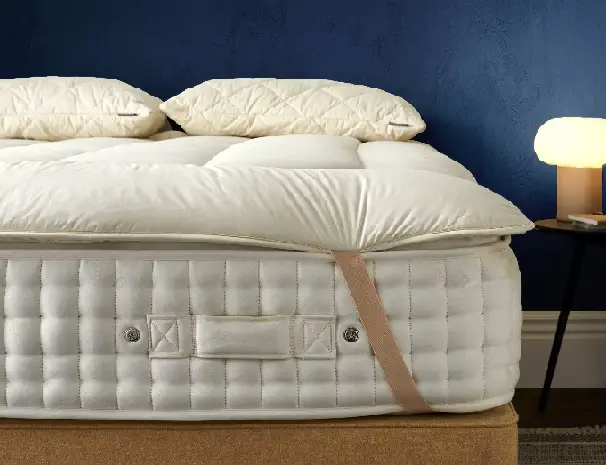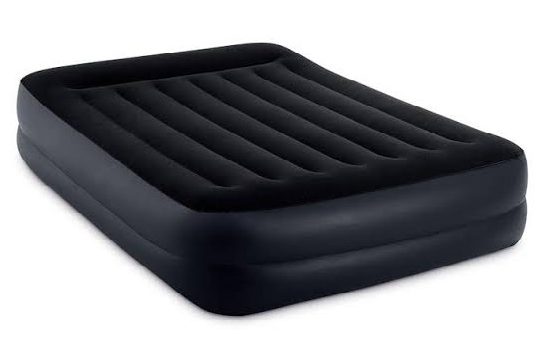Joint and back pain can be caused by a variety of factors such as injury, illness, or poor sleeping habits. Regardless of the cause, the pain can be debilitating and affect your daily life. It is essential to address the issue and find ways to alleviate the discomfort.
When it comes to sleeping, the mattress you choose can make a significant difference in your pain levels. A good mattress should provide support and comfort to help you achieve a restful night’s sleep. If your mattress is too soft or too firm, it can worsen your joint and back pain.
It is important to note that there is no one-size-fits-all solution when it comes to finding the best mattress for joint and back pain. Everyone’s body is different, and what works for one person may not work for another. It is essential to find a mattress that suits your specific needs and preferences.
Factors to consider when choosing a mattress for joint and back pain include the level of firmness, support, and pressure relief. A medium-firm mattress is often recommended as it provides a balance of support and comfort. However, some people may find that a firmer or softer mattress works better for them.
Additionally, it is crucial to consider your sleeping position. If you sleep on your side, you may need a softer mattress to cushion your hips and shoulders. If you sleep on your back, a firmer mattress can provide the necessary support for your spine. And if you sleep on your stomach, a firmer mattress can prevent your spine from arching.
Table of Contents
The Importance of a Good Mattress
Did you know that the average person spends about a third of their life in bed? That’s a lot of time spent sleeping and resting. It’s important to make sure that the time you spend in bed is comfortable and restful. This is especially true if you suffer from joint or back pain. A good mattress can make a big difference in how well you sleep and how you feel when you wake up in the morning.
When you have joint or back pain, it’s important to find a mattress that provides the right amount of support. A mattress that is too soft can cause your body to sink in too much, which can lead to misalignment of your spine and joints. On the other hand, a mattress that is too firm can put too much pressure on your joints, which can cause pain.
A good mattress should provide a balance of support and comfort. It should support your body in a neutral position, which means that your spine is aligned and your joints are in a natural position. At the same time, it should be comfortable enough to allow you to relax and fall asleep easily.
There are many different types of mattresses available, and it can be overwhelming to choose the right one. Some of the most popular types of mattresses include memory foam, latex, and innerspring. Each type of mattress has its own pros and cons, and it’s important to do your research to find the one that is best for you.
In addition to the type of mattress, you should also consider the firmness level. As mentioned earlier, a mattress that is too firm or too soft can cause problems. The ideal firmness level will depend on your body type and personal preferences. Some people prefer a firmer mattress, while others prefer something softer. It’s important to test out different mattresses to find the one that feels best for you.
Types of Mattresses
When it comes to finding the best mattress for joint and back pain, there are several types of mattresses to choose from, each with its own unique features and benefits. Here are some of the most popular types of mattresses:
Innerspring Mattresses
Innerspring mattresses are the most traditional type of mattress and are still popular today. They are made up of a network of steel coils that provide support and durability. The comfort layer on top of the coils can be made from a variety of materials, including foam, fiber, and even cotton.
Memory Foam Mattresses
Memory foam mattresses are made from a dense foam material that conforms to your body’s shape, providing excellent support and pressure relief. They are also great at isolating motion, making them a good choice for couples who don’t want to be disturbed by each other’s movements during the night.
Latex Mattresses
Latex mattresses are made from natural or synthetic latex foam. They are known for their durability, comfort, and excellent support. They are also hypoallergenic, making them a great choice for people with allergies.
Hybrid Mattresses
Hybrid mattresses combine the best features of innerspring and foam mattresses. They typically have a layer of coils for support and a layer of foam or latex for comfort. Hybrid mattresses are a good choice for people who want the support of an innerspring mattress but also want the pressure relief of foam or latex.
Airbed Mattresses
Airbed mattresses use air chambers to provide support and can be adjusted to different firmness levels. They are a good choice for people who want a customizable mattress that can be adjusted to their specific needs.
Memory Foam Mattresses
If you’re looking for a mattress that can help alleviate joint and back pain, you might want to consider a memory foam mattress. These mattresses are designed to conform to your body’s shape and provide pressure relief. Here are some benefits and potential drawbacks of memory foam mattresses to keep in mind.
Benefits of Memory Foam
One of the main benefits of memory foam is its ability to contour to your body’s shape. This can help distribute your weight evenly and reduce pressure points, which can be especially beneficial if you suffer from joint or back pain. Memory foam also has a slow response time, so it can provide a more gradual transition as you move around in your sleep.
Another benefit of memory foam is its motion isolation properties. If you share a bed with a partner, memory foam can help absorb their movements and prevent them from disturbing your sleep. This can be especially helpful if you’re a light sleeper or if your partner tosses and turns throughout the night.
Memory foam mattresses are also hypoallergenic and resistant to dust mites, which can be beneficial for those with allergies or respiratory issues. They are also generally quieter than other types of mattresses, as they don’t have springs that can squeak or creak.
Potential Drawbacks
One potential drawback of memory foam is that it can retain heat. If you tend to sleep hot, you might find that a memory foam mattress feels too warm. However, many memory foam mattresses now come with cooling features, such as gel-infused foam or breathable covers, to help regulate temperature.
Another potential drawback of memory foam is that it can be difficult to move around on. Because it contours to your body’s shape, it can take some effort to switch positions or get in and out of bed. However, this can be less of an issue with firmer memory foam mattresses.
Finally, memory foam mattresses can be more expensive than other types of mattresses. However, the price can vary depending on the quality and features of the mattress, so it’s important to shop around and compare prices before making a purchase.
Innerspring Mattresses
If you suffer from joint or back pain, finding the right mattress can make all the difference in getting a good night’s sleep. Innerspring mattresses are a popular option for those seeking both comfort and support. Here are some benefits and potential drawbacks to consider when choosing an innerspring mattress.
Benefits of Innerspring
Innerspring mattresses are designed with a coil support system that provides a firm and supportive sleeping surface. This can be especially beneficial for those with back pain, as the coils help to distribute weight evenly and support the spine’s natural curve. In addition to providing support, innerspring mattresses can also be comfortable and help you get a good night’s sleep.
Another benefit of innerspring mattresses is their durability. They are typically made with high-quality materials that can withstand years of use without losing their shape or support. This can be a great investment for those looking for a long-term solution to their joint or back pain.
Potential Drawbacks
While innerspring mattresses have many benefits, they may not be the best choice for everyone. One potential drawback is that they can be noisy. The coils can creak and squeak as you move around during the night, which can be disruptive to your sleep.
Another potential drawback is that innerspring mattresses may not provide enough contouring support for those with joint pain. While the coils can provide firm support, they may not conform to your body’s natural curves as well as other types of mattresses, such as memory foam.
Finally, innerspring mattresses can be quite heavy and difficult to move. If you need to move your mattress frequently, this may not be the best option for you.
Latex Mattresses
If you’re looking for a mattress that provides excellent support and pressure relief for joint and back pain, a latex mattress may be a good option. Latex mattresses are known for their durability, responsiveness, and hypoallergenic properties.
Benefits of Latex
One of the biggest benefits of latex mattresses is their ability to contour to your body’s shape and provide targeted support to pressure points. This can help alleviate joint and back pain and prevent further discomfort. Latex is also naturally breathable, which means it can help regulate your body temperature while you sleep. This can be especially beneficial for those who tend to sleep hot.
Latex mattresses are also known for their durability. They can last for up to 15 years or more, making them a good long-term investment. Additionally, latex is naturally resistant to dust mites and mold, which can make it a good choice for those with allergies or asthma.
Potential Drawbacks
One potential drawback of latex mattresses is their cost. They can be more expensive than other types of mattresses, especially if you opt for a high-quality natural latex mattress. Additionally, some people may find that latex mattresses feel too firm or too bouncy, which can be uncomfortable for those with joint or back pain.
Another potential issue is that latex mattresses can be heavy and difficult to move. This can make it challenging to rotate or flip the mattress, which can impact its longevity. Finally, some people may be allergic to latex, which can cause skin irritation or respiratory issues.
Hybrid Mattresses
If you’re looking for a mattress that combines the benefits of both innerspring and foam mattresses, a hybrid mattress might be the right choice for you. Hybrid mattresses are designed to provide the best of both worlds by combining the support and durability of an innerspring mattress with the comfort and pressure relief of a foam mattress.
Benefits of Hybrid
One of the main benefits of a hybrid mattress is that it can provide excellent support for your back and joints. The innerspring coils in a hybrid mattress can help to keep your spine properly aligned, which can reduce pressure on your back and help to alleviate pain and discomfort. At the same time, the foam layers in a hybrid mattress can provide cushioning and contouring to your body, which can help to relieve pressure points and reduce joint pain.
Another benefit of a hybrid mattress is that it can be a good choice if you sleep with a partner. The innerspring coils can help to isolate motion, which can reduce the amount of motion transfer you feel when your partner moves during the night. This can help to improve the quality of your sleep and help you feel more rested in the morning.
Potential Drawbacks
While hybrid mattresses can be a good choice for many people, they’re not right for everyone. One potential drawback of a hybrid mattress is that they can be more expensive than other types of mattresses. However, if you’re looking for a high-quality mattress that can provide excellent support and comfort, a hybrid mattress may be worth the investment.
Another potential drawback of a hybrid mattress is that they can be heavier than other types of mattresses. This can make them more difficult to move and maneuver, especially if you need to move the mattress up or down stairs. However, if you’re not planning on moving your mattress frequently, this may not be a major concern for you.
Factors to Consider When Choosing a Mattress
When it comes to finding the best mattress for joint and back pain, there are several factors to consider. In this section, we’ll explore some of the most important factors to keep in mind when selecting a mattress that will help alleviate your discomfort.
Firmness Level
The firmness level of a mattress is one of the most critical factors to consider when looking for a mattress that can help with joint and back pain. Generally, a medium-firm mattress is the best choice for people with these conditions. A mattress that is too soft may not provide sufficient support, while a mattress that is too firm may create pressure points that exacerbate pain.
Mattress Size
The size of your mattress is another important consideration. You’ll want to choose a mattress that is large enough to accommodate your body and any movement you may make during the night. A mattress that is too small can lead to cramped sleeping positions that may worsen your pain.
Budget
Finally, your budget is an essential consideration when choosing a mattress. High-quality mattresses can be expensive, but they are often worth the investment. However, there are many excellent mattresses available at a lower price point. Be sure to do your research and choose a mattress that provides the best value for your budget.
Frequently Asked Questions
What are the features of a mattress that can help alleviate joint and back pain?
A mattress that can help alleviate joint and back pain should have good support and pressure relief. It should also be able to conform to your body shape and keep your spine in a neutral position. Look for a mattress that has a medium-firm feel, as it can provide the right balance of support and comfort.
What materials should I look for in a mattress to help with joint and back pain?
Memory foam, latex, and hybrid mattresses are good options for people with joint and back pain. Memory foam can provide excellent pressure relief and contouring, while latex can offer good support and responsiveness. Hybrid mattresses combine the benefits of both memory foam and latex, making them a great choice for those who need both support and comfort.
Are there any specific brands or models of mattresses that are recommended for joint and back pain?
There are many brands and models of mattresses that are recommended for joint and back pain. Some of the top-rated mattresses for joint and back pain include the WinkBed, DreamCloud, Saatva Classic, Nolah Evolution 15, Brooklyn Bedding Signature Hybrid, and Layla Hybrid. However, it’s important to note that everyone’s needs are different, and what works for one person may not work for another.
Can a mattress topper help alleviate joint and back pain, and if so, what type should I choose?
Yes, a mattress topper can help alleviate joint and back pain. Look for a topper that is made of memory foam or latex, as these materials can provide good support and pressure relief. A thicker topper can also offer more cushioning and support.
Should I choose a firm or soft mattress for joint and back pain?
It’s generally recommended to choose a medium-firm mattress for joint and back pain. A mattress that is too soft can cause your body to sink in too much, leading to misalignment and discomfort. On the other hand, a mattress that is too firm can put too much pressure on your joints, causing pain and stiffness.
Is it worth investing in an orthopedic mattress for joint and back pain?
Orthopedic mattresses are designed to provide extra support and comfort for people with joint and back pain. While they can be more expensive than regular mattresses, they can be worth the investment if you have chronic pain or a medical condition that requires extra support. However, it’s important to do your research and choose a reputable brand that offers a good warranty and return policy.
Conclusion
Choosing the right mattress can be crucial for managing joint and back pain. While everyone’s needs and preferences are different, there are a few key factors to consider when looking for the best mattress for your needs.
First, look for a mattress that provides adequate support for your spine and joints. This may mean opting for a firmer mattress if you have back pain, or a softer mattress if you have joint pain. Consider your sleeping position and body weight as well, as these can impact the level of support you need.
Second, pay attention to the materials used in the mattress. Memory foam and latex are popular options for those with joint and back pain, as they can contour to your body and provide pressure relief. Innerspring and hybrid mattresses may also work well, depending on the specific design and construction.
Third, think about temperature regulation and breathability. If you tend to sleep hot, look for a mattress with cooling features like gel-infused foam or breathable covers.
Finally, consider your budget. While a high-end mattress may offer more features and benefits, there are plenty of affordable options that can still provide the support and comfort you need.



